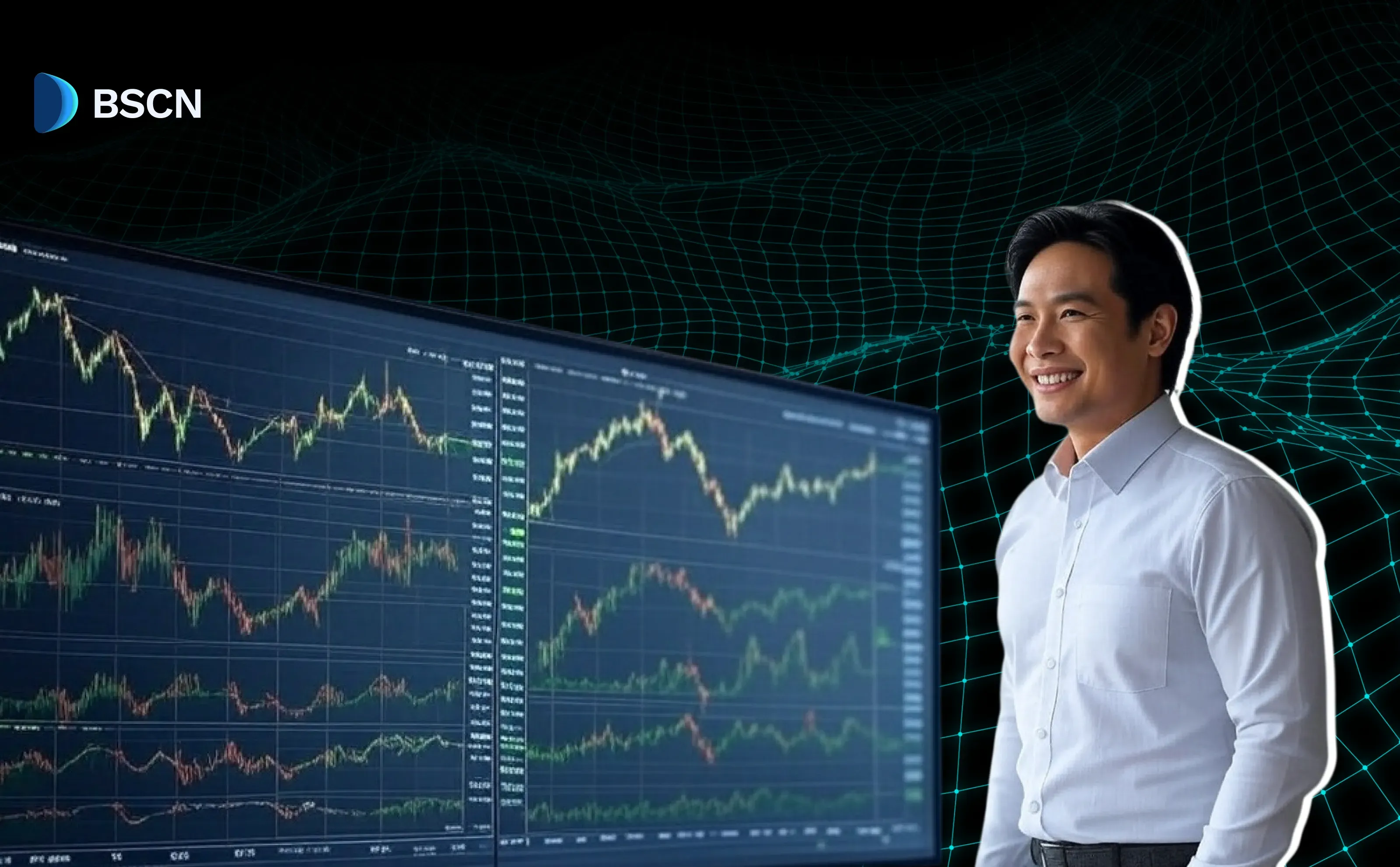PROMO
AI-Powered News Dashboards That Filter Market-Moving Stories For Thai Traders

Bangkok trading desks now use AI-powered dashboards to score news by sentiment and relevance, turning information overload into trading signals.
BSCN
August 2, 2025
The trading floor in Bangkok has changed beyond recognition over the past five years. A decade ago, a typical currency analyst refreshed half a dozen websites, monitored Bloomberg terminals, and juggled chat rooms to catch rumours about Bank of Thailand intervention or sudden oil price shifts that move the baht. Today, artificial-intelligence dashboards feed the same analyst a curated stream of only the most actionable headlines, each scored for sentiment and tagged with likely impact on Thai assets. The result is fewer distractions, faster reaction times, and a clearer picture of how global narratives connect to local markets.
Most Bangkok trading desks now rely on platforms that scan forex news headlines, commodity wires, and regional press in Thai, English, and Mandarin. Natural-language processing ranks each headline by urgency and relevance to currency volatility. Instead of scrolling through stories about distant corporate mergers, a trader sees an instant alert the moment China releases new export data, or when the US Federal Reserve hints at shifting its rate path—developments that reliably ripple into USDTHB pricing. This second-paragraph placement of the keyword also reminds us that quality matters more than quantity: ninety percent of article flow is noise, and filtering it out is a competitive edge.
Why Real Time Intelligence Matters For Bangkok’s Currency Markets
Thailand’s open economy depends on tourism, electronics exports, and energy imports. Any shake-up in these sectors—be it a surprise OPEC production target or an outbreak that slows tourist arrivals—can move the baht as quickly as a central-bank statement. Human analysts are excellent at context but poor at 24-hour vigilance. AI excels at exactly that. Modern dashboards ingest thousands of data points each minute, from Twitter feeds of policy makers to weather disruptions in the Gulf of Thailand that affect rubber shipments. They flag only those items whose historical correlations exceed a defined volatility threshold, turning raw information into early warnings.
How AI Dashboards Turn Information Overload Into Actionable Signals
Behind the clean interface sits a workflow that would exhaust a room full of interns:
- Data aggregation – The system ingests global wires, local Thai newsrooms, social media sentiment, and even public Telegram channels used by day traders.
- Language detection and translation – Stories in Thai, Lao, Vietnamese, or Japanese are auto-translated on the fly, preserving tone and financial jargon.
- Contextual tagging – Each story is mapped to instruments: USDTHB spot, SET50 futures, or offshore baht NDFs.
- Impact scoring – Machine-learning models compare the headline with years of tick data to estimate probabilistic price impact within one, five, and thirty minutes.
- Alert delivery – Traders receive a push notification only if the score tops a user-defined threshold, ensuring attention is spent wisely.
This pipeline is invisible to the end-user, who simply sees a headline accompanied by a confidence bar and a suggested trade idea such as “long baht vs yen” or “hedge SET travel stocks.”
Localisation Tweaks Thai Traders Should Demand
Global services are powerful, yet Thailand adds its own quirks that generic dashboards may miss. Look for tools that:
● Parse Bank of Thailand press releases in Thai script and convert them into structured data within seconds.
● Track Thai Ministry of Agriculture crop reports, crucial for companies like Charoen Pokphand and for inflation expectations.
● Integrate regional holiday calendars so volatility alerts adjust on Songkran and Loy Krathong when liquidity dries up.
● Offer sentiment analysis tuned to Thai slang on X (Twitter) and Pantip forums, capturing the retail crowd’s mood before it hits price.
These localisation layers ensure that the AI is not just fast, but culturally literate.
Comparing Leading AI News Dashboards
Thai brokers and independent traders frequently evaluate several commercial platforms before settling on one. Keep the following criteria in mind:
• Coverage depth – Does the dashboard include domestic Thai dailies such as Krungthep Turakij as well as global agencies?
• Latency – How many seconds elapse between a US non-farm payroll headline and the dashboard alert? Milliseconds matter during volatile releases.
• Custom rule builder – Can you create if-this-then-that logic, for example: “If China PMI < 49 and USDTHB > 36.00, then send high-priority alert”?
• Cost and API access – Some platforms bundle their AI feed with charting, while others charge extra for API integration into MetaTrader or custom Python scripts.
Testing for a full week with live positions gives the clearest picture of which tool pays for itself.
Building A Daily Workflow Around Your Dashboard
Owning great technology is only half the battle. Bangkok’s top proprietary desks devote the first fifteen minutes of each morning to configuring watchlists: USDTHB, USDCNH, SET50, and gold baht futures. They set alert thresholds slightly tighter before key events such as Bank of Thailand meetings, then loosen them during quiet periods to avoid fatigue. Push notifications go to desktop first and mobile second, so that a trader walking to lunch can still act on sudden developments.
Many desks pair the AI dashboard with automated ticket-generation scripts. When a high-confidence alert arrives, a pre-defined ticket populates in the order blotter: size, stop loss, and take-profit levels based on the dashboard’s suggested volatility band. A human then reviews and clicks send. This hybrid model blends machine speed with human judgment, reducing both slippage and emotional bias.
Conclusion: Turning Headlines Into Baht
Information has always been the lifeblood of trading, yet its raw form is now too abundant to drink directly. AI-powered dashboards act as precise filtration systems, supplying Thai traders with distilled, actionable insight exactly when the market moves. By demanding localisation features that speak the language—literally and figuratively—and by embedding the alerts into disciplined execution routines, Bangkok’s traders transform mere data into a steady advantage against the clock. As machine learning models continue to mature, the gap will widen between those who harness filtered intelligence and those still wading through the flood of unranked headlines.
Disclaimer: This is a paid press release. bsc.news does not endorse and is not responsible for or liable for any content, accuracy, quality, advertising, products, or other materials on this page. Readers should do their own research before taking any actions related to the company and content. bsc.news is not responsible, directly or indirectly, for any damage or loss caused or alleged to be caused by or in connection with the use of or reliance on any content, goods, or services mentioned in the press release. To learn more about how we monetize, please click here or get in touch by emailing [email protected].
Author
 BSCN
BSCNBSCN's dedicated writing team brings over 41 years of combined experience in cryptocurrency research and analysis. Our writers hold diverse academic qualifications spanning Physics, Mathematics, and Philosophy from leading institutions including Oxford and Cambridge. While united by their passion for cryptocurrency and blockchain technology, the team's professional backgrounds are equally diverse, including former venture capital investors, startup founders, and active traders.
Latest News
Crypto Project & Token Reviews
Project & Token Reviews
Comprehensive reviews of crypto's most interesting projects and assets
Learn about the hottest projects & tokens












